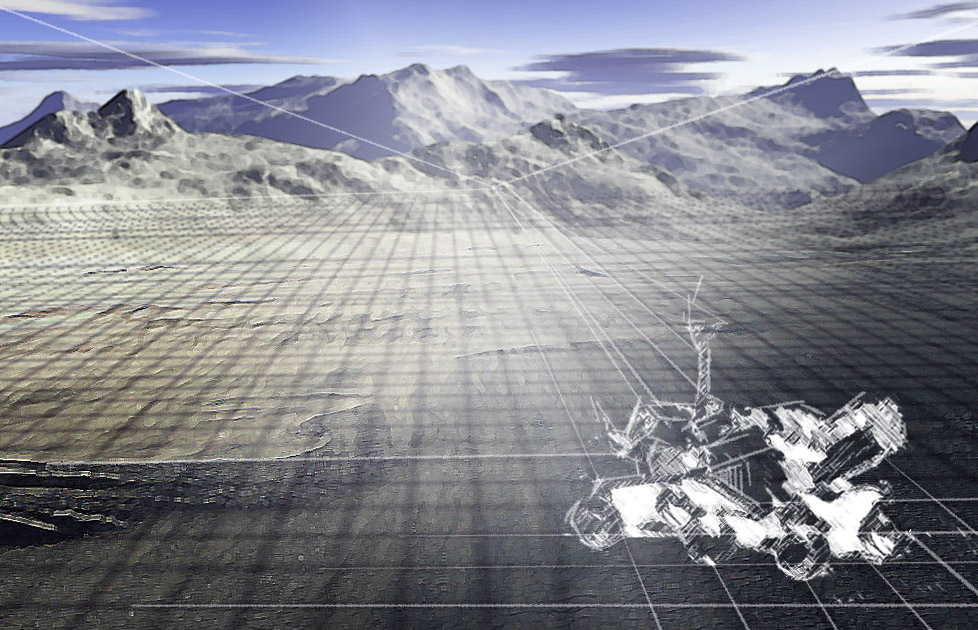Among the many wide-ranging fields of science, few are as interdisciplinary as astrobiology, a fairly recent branch of life science that finds its roots in disciplines as varied as astronomy, chemistry, and geology. The latter started playing a pivotal role in the development of this field in the recent past; as it turns out, the best way to understand how life blossoms in the universe might be to look at its only known cradle of life: the Earth. Specifically, the requirements for life can be most interestingly observed in the austere environments of our planet’s polar regions.
Indeed, the mysteries of the Arctic and the Antarctic have intrigued many generations of scientists in the making. Wayne Pollard, a professor in the Department of Geography at McGill, is no exception. “As a kid, I always had this fascination with the North, something you could compare at the time with the Gold Rush,” explained Pollard passionately. “However, it wasn’t until graduate school that I got to make my first experiences there.” A PhD centered on ground water research in northern Yukon later, Pollard still had the drive to learn from the poles.
Following a postdoctoral fellowship with the Geological Survey of Canada and some work with Memorial University, he started his work at McGill. This included more research around permafrost, ground that remained under the water freezing point for more than two years. “I was interested in observing how climate change related to the melting of permafrost, and in the changes of arctic coastal landscapes,” the geologist explained. As his work on permafrost dynamics unravelled, Pollard added a new perspective to his scope of action after being approached for an unexpected collaboration.
“I was now the research director of two northern research stations, one of them being the McGill Arctic Research Station (MARS) on Axel Heiberg Island, in Nunavut.” Interestingly enough, this acronym soon took a whole new meaning. “A picture from a nearby lake captured the attention of NASA researchers, who saw an opportunity to study the conditions on Mars, as well as on the moons of Jupiter and Saturn.” Titan, a moon of Saturn, and Europa, a moon of Jupiter, are known to have icy surfaces, and it is believed those coatings might conceal oceans. The possible presence of liquid water on other astronomical bodies has long been a focal point of astrobiological research. “While water isn’t an absolute requirement for the development of life, it certainly helps it considerably,” he adds.
As NASA became more interested in Pollard’s research, he took the initiative of sharing even more interesting hydrological features with them. “I showed them what we called perennial springs. The presence of minerals in water depresses its freezing point. Given that the temperature of permafrost can be warmer than that of air, this allows the water under the ice to rush on the surface.” This opened a whole new door on the study of water behaviour in cold climates. Indeed, many sub-zero structures on other planets could be better understood by improving our understanding of our own mystifying hydrological systems. The distribution of ground ice and ground water, which can be analyzed with the help of a ground-penetrating radar, is one of those important elements. The latter is instrumental if we ever want to understand the possible presence of water on Mars, or Europa. The collaboration, which began in 1995 and received the support of the Canadian Space Agency, has lasted ever since. “Using the Arctic as a planetary analogue has become an important part of our research, and we’ve published many papers on the subject in the past few years.”
Comparisons between Earth and Mars have always generated interest. Amidst their contrasting features, general similarities can still be noticed. “Venus, the Earth, and Mars have all evolved along a common geological path. Naturally, their respective positions in the Solar System, among other factors, have shaped their differences, Venus being too warm and Mars too cold for life as we know it. However, they remain very close geologically when compared to gas giants like Jupiter, which has a different structure.”
If life was ever to be found on Mars, the odds are it would be in the form of a fossil, as its conditions were closest to that of the Arctic around two to three billion years ago. While these insights from the past fascinate scientists from all fields, the future of Mars remains difficult to predict, as we still have a lot to understand. If the conditions on the ‘Red Planet’ got even further away from those on our own planet with time, exactly how Earth-like could Mars ever be? When questioned on that subject, Pollard opts for a careful approach. “Despite my work on planetary analogues, I’m still not an expert on Mars. It does lack many of the Earth’s vital aspects, such as its tectonic activity and the regulation of its moon.” However, its future is still unpredictable. “I suppose Mars could get slightly more Earth-like at some point under certain conditions. If its rotation axis became more inclined, for instance, some changes could occur.” While Mars still holds many mysteries, some can now be studied from the comfort of our permafrost.

